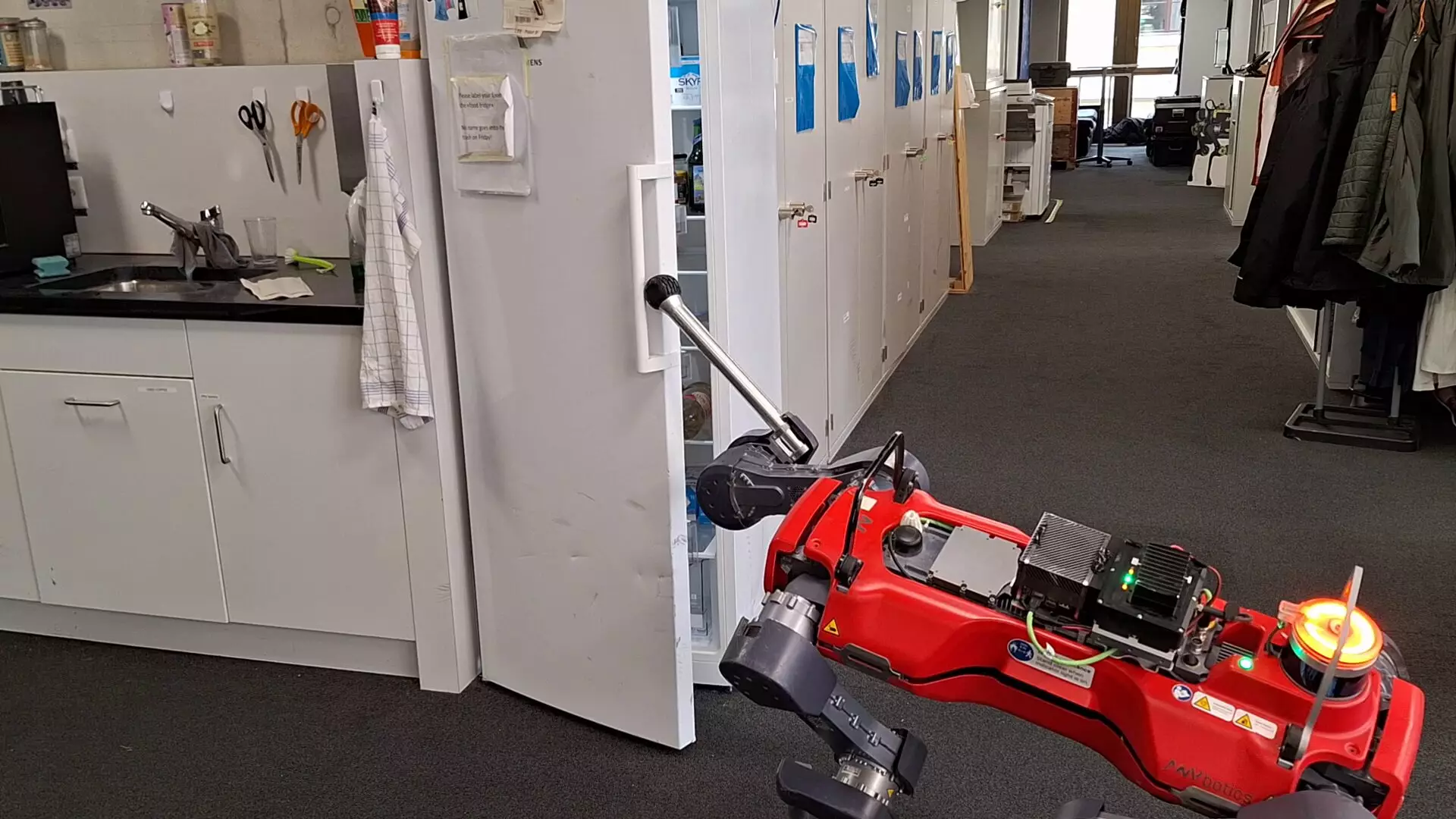In recent years, robotic systems have undergone a remarkable transformation. From the rigid and stiff robots of the past, we now have a diverse array of soft, humanoid, and animal-inspired robots at our disposal. Among these, legged robots, especially quadrupeds, have shown great promise in performing simple tasks on the ground like exploration and object transportation. However, the interaction capabilities of most legged robots with objects and humans remain limited, often necessitating additional bulky components like robotic arms or grippers.
A team of researchers at ETH Zurich has recently introduced an innovative approach to revolutionize the way legged robots interact with their surroundings. Through a reinforcement learning-based model presented in a paper on the preprint server arXiv, these researchers have paved the way for quadruped robots to undertake advanced tasks such as opening a fridge or moving obstacles without the need for extra appendages.
The primary goal of this groundbreaking work was to develop a versatile methodology that enables legged robots to address a broader spectrum of real-world challenges. Leveraging reinforcement learning, a well-established technique in robotics, the researchers trained the model to refine the robot’s skills over time by repeatedly bringing its foot to a specified position in a simulation. This adaptive approach rendered the robot robust against uncertainties it may encounter in actual environments.
Initial experiments with the researchers’ model showcased the significant advancements in object manipulation capabilities of quadruped robots. These robots could now proficiently complete tasks such as opening doors, carrying objects, pressing buttons, pushing obstacles, and even collecting objects from the floor. The model encourages robots to utilize their entire body, including unconventional maneuvers like leaning forward to reach a button with a foot or hopping towards a distant target.
The researchers were pleasantly surprised by the wide range of tasks that the robot could accomplish utilizing its feet alone. While the robot is currently controlled remotely, the ultimate goal is to automate numerous tasks, thereby broadening the application scope of legged robots without requiring hardware modifications. As the computational model continues to evolve and undergo training on various tasks, it holds the potential to revolutionize the applications of legged robots in real-world scenarios.
With further advancements and refinement, the new computational model developed by the researchers at ETH Zurich could set the stage for fully autonomous robotic scenarios. Legged robots equipped with this technology could be deployed for tasks like warehouse inspections or infrastructure surveys, where they could independently interact with their environment by pressing buttons, moving levers, and opening doors. The ongoing efforts of the researchers focus on enhancing the autonomy of their approach and automating additional tasks like object grasping and accessing different types of doors, thus pushing the boundaries of what legged robots can achieve.


Leave a Reply